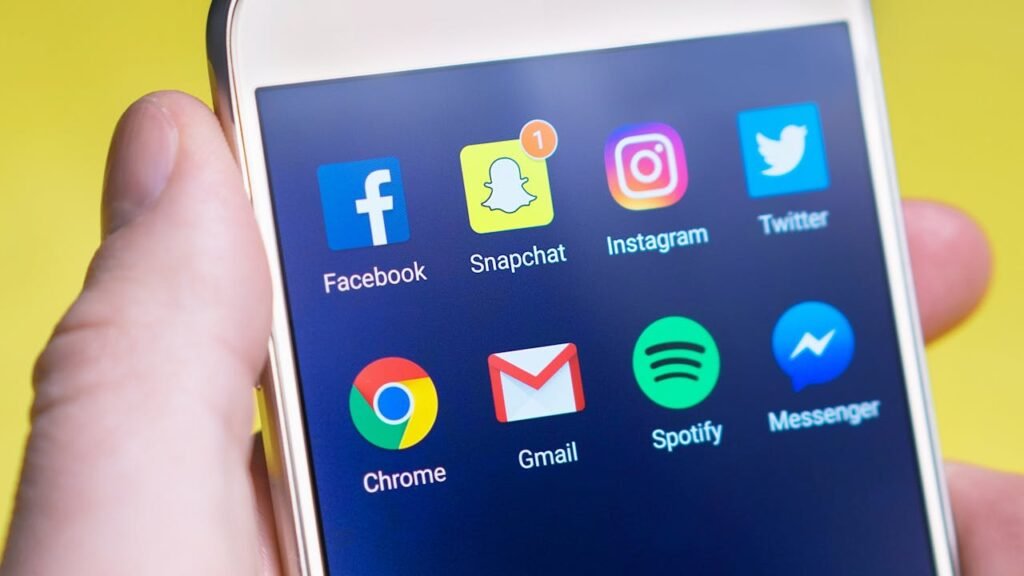We’ve all seen them—the campaigns that take the internet by storm, filling our feeds, sparking conversations, and leaving us wondering, “How did they pull that off?” Viral marketing is the holy grail for B2C marketers, offering the promise of massive reach and brand recognition without the need for an astronomical ad spend. But here’s the thing: virality isn’t about luck. It’s about strategy, timing, and tapping into what resonates with people.
What Makes a Campaign Go Viral?

Understanding what makes a campaign go viral isn’t just about creativity—it’s about knowing how to engineer shareability and emotional resonance. For startup founders, crafting a viral campaign requires blending psychological insights, audience understanding, and strategic execution. Viral campaigns don’t just happen; they are built on specific triggers that prompt people to share and engage.
One of the most critical factors in viral success is creating content that aligns with your audience’s values and aspirations. People are more likely to share campaigns that reflect their identity or express something they care deeply about. This is why campaigns tied to social causes or universal human truths often gain traction.
For example, if your brand supports sustainability, a campaign that highlights small actions customers can take to help the environment, tied to your product, can resonate deeply. To make this work, you must know your audience’s passions and craft a message that feels authentic and empowering.
Virality also thrives on relatability. Campaigns that resonate with everyday experiences, struggles, or moments often perform better because they feel personal. For instance, memes and relatable humor are so widely shared because they strike a chord with people’s lives. For startups, tapping into shared experiences—like the chaos of work-life balance or the excitement of a new hobby—can create a connection that compels your audience to share your content.
Another major driver of virality is the sense of discovery. People love being the first to uncover something exciting or unique. Campaigns that offer exclusivity or an element of surprise tap into this desire.
For example, you could create a “secret” product launch or a cryptic teaser campaign that sparks curiosity. By framing your campaign as something to discover and share, you give your audience a reason to spread the word.
Social proof is another essential ingredient in making a campaign go viral. When people see others engaging with or endorsing something, they’re more likely to follow suit.
For startup founders, this means leveraging testimonials, influencer partnerships, or user-generated content to show that others are already excited about your campaign. Highlighting how many people have participated, shared, or benefited from your campaign creates momentum that encourages more people to join in.
The structure of your content also plays a critical role. Viral campaigns often have a clear, single focus. They are easy to understand and communicate, even at a glance. Overloading your message with multiple ideas or calls to action can dilute its impact.
For startups, simplicity is key. Your content should communicate its core value or story within seconds, ensuring that it captures attention before users scroll past.
Interactivity is another powerful tool in creating virality. Campaigns that invite participation—whether through challenges, games, or shareable actions—give people a direct role in the campaign’s success. Participation not only boosts engagement but also increases the likelihood of sharing.
For example, a campaign that challenges users to create their own content, like videos or photos, builds both excitement and a sense of ownership. For startups, designing your campaign to be a collaborative experience can amplify its reach while fostering a deeper connection with your audience.
Timeliness can make or break a campaign’s virality. Viral campaigns often tap into current events, trending topics, or cultural moments, aligning their message with what’s already on people’s minds. For startups, staying attuned to trends and acting quickly is essential.
If you can tie your campaign to a major holiday, a viral meme, or a relevant news event, you increase its chances of being noticed and shared. However, the connection must feel natural; forced or irrelevant tie-ins can harm your credibility.
Emotion remains one of the most potent drivers of virality. Campaigns that make people laugh, cry, or feel inspired create a sense of urgency to share. This emotional connection is what transforms passive viewers into active participants. For startups, finding the emotional core of your message—whether it’s joy, hope, nostalgia, or even outrage—can elevate your campaign from ordinary to unforgettable.
Lessons from Top Brands
How They Nailed Viral Campaigns

When top brands create viral campaigns, it’s not by accident. Each campaign is meticulously crafted to resonate with audiences, align with brand values, and spark a wave of shares and engagement.
For startup founders, dissecting these success stories provides actionable insights into the mechanics of virality and how to apply them at any scale. Let’s explore additional lessons from brands that excelled in creating viral campaigns, along with strategies you can adapt to your own business.
Apple’s “Shot on iPhone” campaign is a masterclass in leveraging user-generated content to create authentic, shareable stories. By showcasing stunning photos and videos captured by real users, Apple made its product’s quality the hero of the story. The campaign not only inspired pride among iPhone users but also built trust among potential buyers who saw everyday people achieving professional-quality results.
For startups, the lesson is to find ways to empower your customers to demonstrate the value of your product or service. When customers feel involved in your brand’s narrative, they’re more likely to share their experiences, turning them into advocates and extending your reach organically.
The ALS Ice Bucket Challenge demonstrated the power of making participation simple and impactful. Its success lay in the campaign’s straightforward premise: participants were challenged to pour ice water on themselves, donate to ALS research, and nominate friends to do the same.
This blend of fun, social proof, and philanthropy created a perfect storm for virality. For startup founders, the key takeaway is to make your campaigns easy to participate in and tied to a meaningful purpose. When people feel like their small action can contribute to something bigger, they’re more likely to get involved and spread the word.
Heinz’s “Edchup” campaign, where they created a limited-edition ketchup in collaboration with singer Ed Sheeran, is a brilliant example of leveraging celebrity partnerships to drive viral success. Sheeran’s love for Heinz was well-known, making the collaboration feel authentic and exciting to his fans.
The campaign quickly sold out and gained significant media coverage, combining the power of celebrity influence with a playful, shareable concept. For startups, this shows the potential of partnering with influencers or public figures whose values and audience align with your brand. A well-executed collaboration can add credibility, generate buzz, and introduce your product to a broader audience.
Guinness’ “Made of More” campaign stood out for its ability to tell a powerful, values-driven story. The campaign featured real-life individuals and communities that embodied resilience, courage, and authenticity—values that aligned with Guinness’ brand identity.
These emotionally charged stories connected deeply with audiences, elevating the brand beyond its product. For startup founders, the lesson is to find the deeper “why” behind your business and use it to tell stories that resonate with your audience’s values. When your campaign reflects something meaningful, it becomes shareable not just for its content but for what it represents.
Spotify’s “Wrapped” campaign is a yearly example of how personalization can drive massive engagement. By creating customized year-end summaries of users’ listening habits, Spotify transformed individual data into a shareable experience. Users proudly posted their “Wrapped” results on social media, turning the campaign into a viral sensation year after year.
For startups, this highlights the power of leveraging customer data to create personalized, shareable content. Whether it’s usage statistics, preferences, or achievements, turning customer insights into a feature they can showcase can amplify your brand’s reach.
Tinder’s “Swipe Night” campaign brought gamification and storytelling together to re-engage its audience in a creative way. The interactive event allowed users to make choices in a post-apocalyptic storyline, with their decisions affecting their matches.
This innovative approach not only entertained but also encouraged participation and discussion. For startups, this demonstrates the importance of thinking outside the box to create unique experiences. When you innovate in how customers interact with your brand, you create opportunities for virality by offering something they’ve never seen before.
Always’ “#LikeAGirl” campaign took a common insult and turned it into an empowering movement. By questioning the stereotypes associated with doing something “like a girl,” the campaign resonated across genders and age groups, sparking conversations about confidence and societal expectations.
For startups, this campaign underscores the importance of challenging the status quo. If your brand can disrupt outdated ideas or take a fresh perspective on an issue, you can generate buzz while positioning yourself as forward-thinking and impactful.
Crafting Your Own Viral Campaign: The Key Ingredients

When creating a viral campaign, understanding the different approaches that top brands use can help you decide which strategy aligns best with your goals, audience, and resources. While the examples we’ve explored share certain principles, each brand’s approach offers unique insights. Let’s break down the distinct angles you can take when crafting your own viral campaign and compare their effectiveness.
Emotional Resonance vs. Humor
Which Is More Effective?
Campaigns like Dove’s “Real Beauty Sketches” rely heavily on emotional resonance, appealing to universal feelings of self-worth and beauty. On the other hand, Old Spice’s “The Man Your Man Could Smell Like” takes a completely different route, using humor and absurdity to grab attention.
The decision between emotional resonance and humor depends on your brand identity and audience. Emotional campaigns tend to have lasting impacts and foster deep connections, making them ideal for brands aiming to build trust and loyalty. Humor, meanwhile, is excellent for gaining quick attention and virality but may not always create a lasting emotional bond.
For startups, humor can be a cost-effective way to stand out, especially in crowded industries. However, if your brand tackles serious or value-driven topics, an emotionally charged campaign might align better with your long-term goals.
Broad Appeals vs. Niche Focus
How Wide Should Your Net Be?
Nike’s “Dream Crazy” campaign targeted a broad audience by celebrating perseverance and achievement, universal values that resonate across demographics. Meanwhile, Netflix’s “Stranger Things” leveraged 80s nostalgia to attract a specific, niche audience that would champion the show.
A broad approach is ideal for campaigns aiming to maximize reach and appeal to diverse audiences. However, niche campaigns can drive more passionate engagement, as they feel highly personal to the target audience. The choice here depends on your product and goals. If you’re introducing a mass-market product, a broad campaign might work best. If you’re targeting a specific segment, going niche could yield higher-quality engagement.
User-Generated Content vs. Brand-Created Content
What Works Better?
Coca-Cola’s “Share a Coke” and the ALS Ice Bucket Challenge both relied on user-generated content (UGC) to spread their message. These campaigns thrived because they empowered audiences to create and share content, making them feel like part of the campaign.
By contrast, campaigns like Airbnb’s “Live There” were more brand-driven, using curated content to control the narrative and highlight key selling points. Both approaches have their merits. UGC campaigns are excellent for generating organic reach and engagement but require careful moderation to maintain brand alignment. Brand-created campaigns offer more control over messaging but may lack the grassroots momentum that UGC provides.
For startups, UGC can be a powerful way to amplify your reach without a significant budget. Encouraging customers to share their stories, photos, or experiences with your product can generate authentic content that feels relatable and trustworthy.
High-Production Value vs. Authentic Simplicity

Where to Invest?
The production value of a campaign can influence its appeal. Nike’s ads often feature high-quality visuals, famous athletes, and compelling cinematography. Meanwhile, the Ice Bucket Challenge gained traction with simple, user-recorded videos that required no budget.
High-production campaigns can enhance credibility and make your brand appear polished and professional. However, authenticity often trumps production value, especially in today’s social media-driven world, where audiences value relatability. A startup’s campaign doesn’t need Hollywood-level production to go viral; what matters more is the message and the emotional connection it fosters.
Planned Virality vs. Organic Growth
Which Strategy Is More Realistic?
Some campaigns, like Burger King’s “Whopper Detour,” are meticulously planned to ensure they create buzz. Others, like the Ice Bucket Challenge, start small and grow organically. While planned campaigns provide more control and predictability, organic virality relies on spontaneity and audience participation.
For startups, planning for virality is often the more realistic approach. By strategically designing your campaign around shareable elements and leveraging influencers or ad targeting to kickstart momentum, you can increase your chances of success. Organic virality, while ideal, often depends on unpredictable factors like timing and cultural relevance.
How to Choose the Right Approach for Your Brand

Selecting the right approach for a viral campaign is as much about understanding your brand as it is about understanding your audience.
For startup founders, the decision involves aligning your campaign’s concept, tone, and strategy with your brand identity, business goals, and the specific audience you want to reach. The wrong approach can dilute your message or miss the mark entirely, while the right one can catapult your brand into the spotlight and drive measurable results.
Start by defining your brand’s core values and personality. Every campaign should reflect who you are as a business. For example, if your brand prides itself on being playful and innovative, a humor-driven campaign might align best with your tone.
On the other hand, if your brand is built around social impact, an emotionally charged or values-driven campaign would be a better fit. This alignment ensures your campaign feels authentic, which is critical for building trust and sparking engagement.
Understanding your audience is equally essential. Demographics like age, location, and gender only scratch the surface. Dig deeper into psychographics—what motivates your audience, what they care about, and how they spend their time online.
If your audience skews younger and spends hours on TikTok, a visually striking or interactive campaign designed for short-form video will likely perform better than a static post on Facebook. Tailoring your approach to fit their preferences makes it more likely that your campaign will resonate and encourage sharing.
Your business goals should also guide your choice of campaign approach. If your primary goal is to drive brand awareness, focus on broad-reaching, emotionally engaging campaigns that are designed to be shareable across diverse audiences.
However, if your goal is to drive sales or app downloads, a more targeted approach with clear incentives—such as discounts, exclusive access, or rewards—may be more effective. Startups with limited budgets should prioritize campaigns that align directly with measurable objectives to maximize ROI.
The competitive landscape is another important consideration. Examine what competitors in your industry are doing. If they’ve saturated the market with one type of campaign, look for opportunities to differentiate yourself.
For example, if competitors are heavily using influencer marketing, you might choose to focus on user-generated content or experiential marketing to stand out. By finding a unique angle, you avoid blending in and increase your chances of capturing attention.
Timing can heavily influence your approach as well. Campaigns tied to cultural moments, seasonal events, or trending topics often perform better because they feel relevant and timely. However, rushing to capitalize on a trend without a solid plan can backfire.
Take the time to ensure the trend aligns with your brand and audience. For instance, a food delivery startup might tie a campaign to the Super Bowl, offering playful content and special promotions for game-day snacks. This not only ties into a cultural moment but also leverages a natural connection to the brand’s offering.
The resources you have available will also shape your campaign’s direction. High-production campaigns, like Nike’s cinematic storytelling ads, require significant budgets and expertise, while grassroots campaigns, like the ALS Ice Bucket Challenge, rely more on creativity and audience participation.
As a startup, you don’t need to match the production value of a Fortune 500 company to succeed. Focus on ideas that are scalable and rely on authenticity, user involvement, or unique concepts to carry the campaign.
Consider your brand’s current positioning and the gaps you want to address. If you’re a new player in the market, your approach should prioritize visibility and differentiation, perhaps through humor, gamification, or partnerships with well-known influencers.
If your brand is established but struggling with engagement, creating a campaign that encourages active participation or rewards loyalty might be the way forward. The stage of your business determines not only the type of campaign but also its tone and execution.
Finally, test your concept on a smaller scale before launching it widely. Share a prototype of your campaign with a focus group or a subset of your audience to gather feedback. Pay attention to their reactions—what they find engaging, confusing, or underwhelming—and refine your approach accordingly. This iterative process helps ensure your campaign is poised for success when it launches.

Conclusion
Creating a viral campaign is every B2C marketer’s dream, but it requires more than just creativity—it demands strategy, a deep understanding of your audience, and alignment with your brand’s identity. Top brands have shown us that virality is not just about reaching millions; it’s about resonating with the right people, sparking conversations, and leaving a lasting impact.
For startup founders, the key to success lies in adapting these lessons to your unique circumstances. You don’t need a massive budget or a global following to go viral; you need a compelling idea, a clear purpose, and a strategy tailored to your goals and audience.
Focus on creating campaigns that evoke emotion, encourage participation, and tap into cultural moments. Be authentic, stay true to your brand’s values, and never underestimate the power of simplicity and relevance.





















